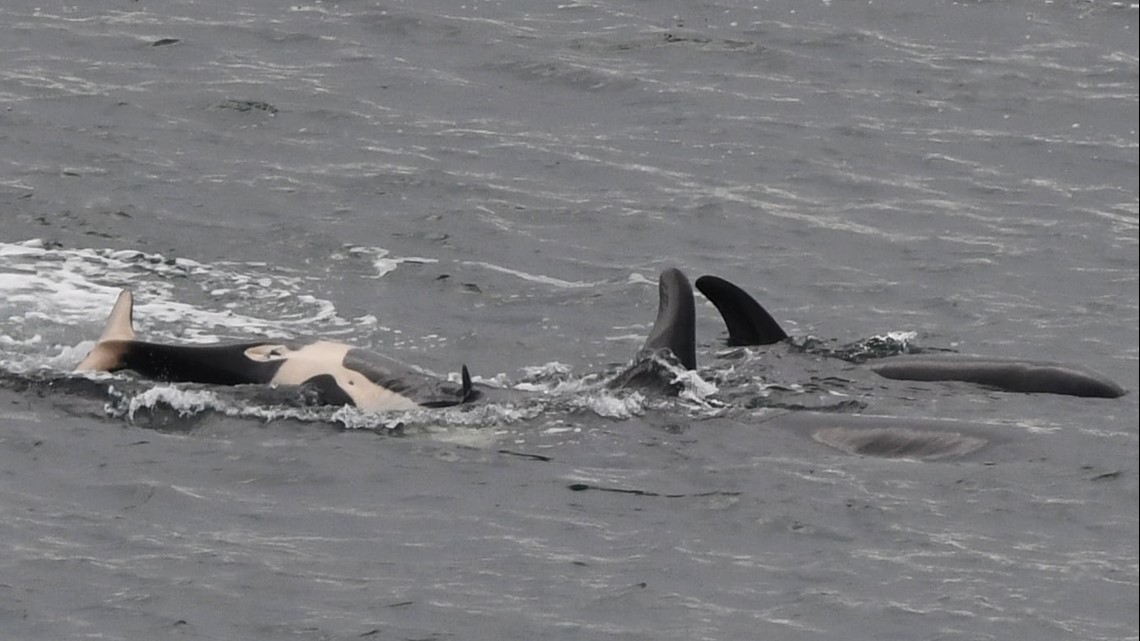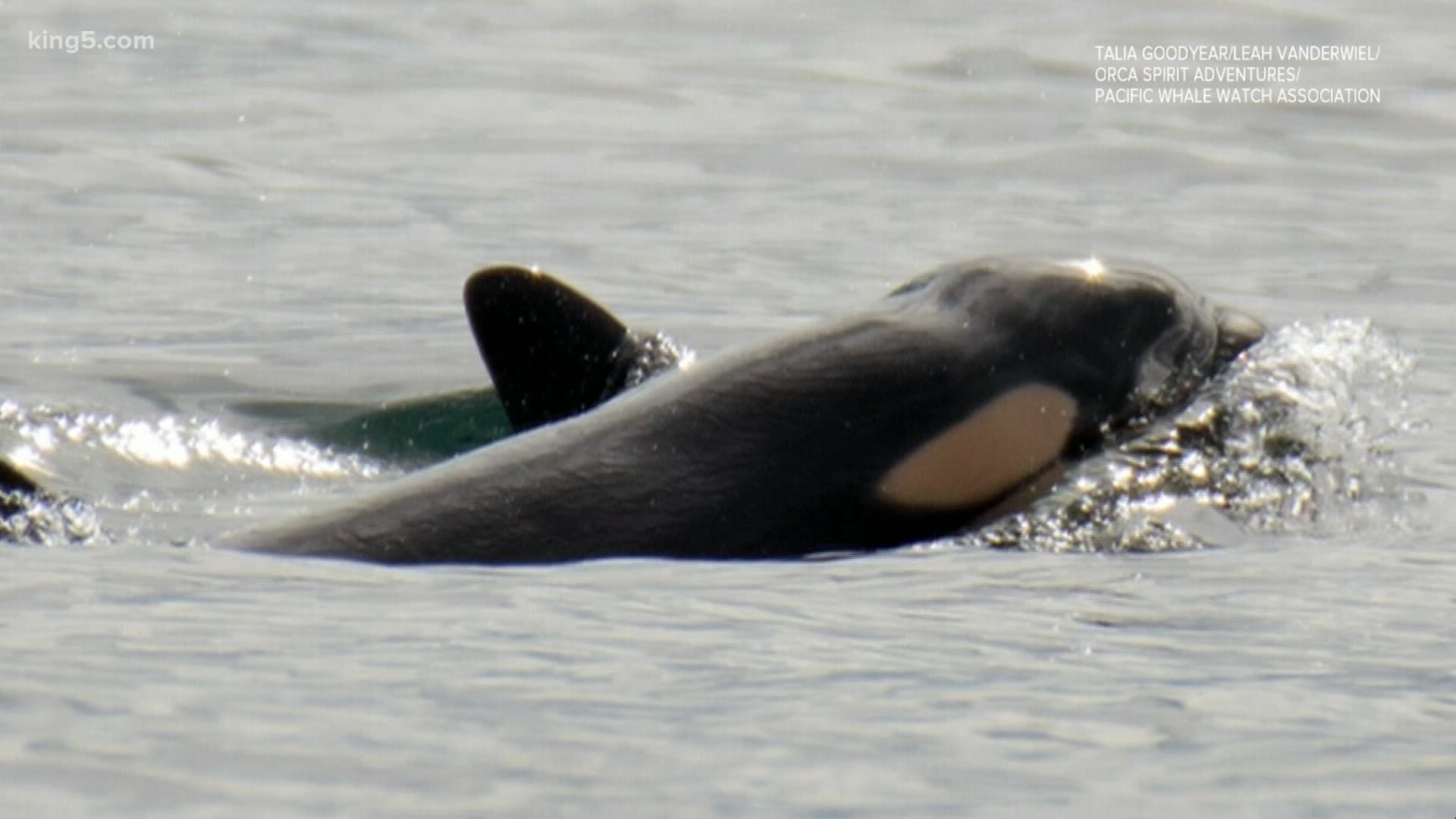SEATTLE — A small barrel roll gave Washington whale watchers a gender reveal over the weekend and reason to be hopeful about a pod of endangered Southern Resident orcas that frequent Puget Sound.
The Center for Whale Research (CWR) confirmed the J-pod’s newest calf, J58, is a female. The 6-month-old calf was photographed rolling onto her back, revealing her underside which allowed researchers to determine the gender.
The calf was born last September to J41 off the waters of Vancouver, British Columbia. Another Southern Resident orca, J35, also gave birth to a new male calf, J57, in September.
J58 was photographed from the shore by Jeanne Hyde while on the west side of San Juan Island Saturday. Hyde said she saw the two youngest calves with the other J-pod orcas when they took the picture researchers used to identify J58 as a female.
“The two youngest were leaping, attempting to spy hop, being pushed around by their moms (normal), just being little babies,” Hyde said in an email to KING 5. “All those antics led to 'the reveal!'”
The CWR said new female Southern Resident orcas “are critical to the population's sustainability.”


In February, the Washington Department of Fish and Wildlife (WDFW) asked recreational boaters to steer clear of the orcas and give them extra space on the water.
“By giving the new calf and its extended family more space and quieter waters so they can find salmon, boaters can help give this little one the best chance of thriving in what continues to be a difficult time for the endangered orcas,” said Nora Nickum, ocean policy manager with the Seattle Aquarium.
The WDFW said boat traffic can interrupt the echolocation clicks the whales use to hunt fish, and research from the National Oceanic and Atmospheric Administration (NOAA) Fisheries indicates this is especially true in female killer whales. The females often stop foraging when boats approach within 400 yards, which is most concerning in pregnant or nursing mothers supporting calves.
Regulations signed into law in 2019 require boats to stay at least 300 yards from Southern Resident killer whales and at least 400 yards out of their path or behind them. Boats also have to reduce their speed to seven knots within a half-mile of a whale. The only exception is for defined daily periods in July through September.

